The State of SanDisk
by Kristian Vättö on December 5, 2014 8:00 AM EST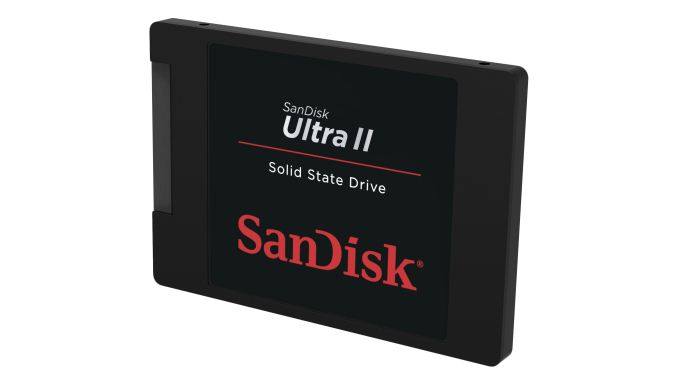
Back at Flash Memory Summit I had the opportunity to meet with all the key people at SanDisk. There is a lot going on at SanDisk at the moment with the Fusion-io acquisition, TLC NAND, and other things, so I figured I would write a piece that outlines SanDisk's current situation and what they're planning for the future.
I'll start with the client side. For SanDisk the big topic at this year's Flash Memory Summit was TLC NAND and we were given a sneak peek of the SanDisk Ultra II back at the show, which was then released a few weeks later. Since we have already reviewed the Ultra II, I'm not going to talk about the drive itself and its technical merits, but there are a few things that Kevin Conley, senior vice president and general manager for SanDisk's client business brought up about TLC and the client market in general.
I'm sure most of our long-time readers remember how SSD prices plummeted between 2010 and 2012. The reason for that wasn't a breakthrough in NAND technology, but merely the fact that all manufacturers increased their manufacturing capacity with the expectation of exponential NAND demand growth. As you can see in the graph above, the industry bit growth was over 60% year-over-year between 2010 and 2012, which lead to oversupply in the market and deflated the prices.
The reason why all NAND manufacturers invested so heavily on capacity increases was the popularity of smartphones and tablets; it was expected that the average storage capacity would increase over time. Basically, the NAND manufacturers assumed that decreases in NAND prices due to smaller lithographies would translate to higher capacity smartphones and tablets, but in fact the mobile companies chose to save on onboard storage and invest in other components instead (camera, SoC, etc.).
It's only been recently that smartphone and tablet manufacturers have started to increase the internal NAND and offer higher capacity models (e.g. the 128GB iPhone 6/6+), but even today the majority of devices are shipping with 16GB, which is the same capacity that the low-end iPhone 3GS had when it was introduced in 2009. Of course a large reason for the reduced sales of higher capacity smartphones/tablets has a lot to do with pricing, where 32GB devices often cost $100 more than the 16GB model.
Since the NAND manufacturers are now adding fab space at a slower pace, they are looking for alternate ways to increase bit growth and scale costs down – and that's where TLC kicks in. Because TLC packs in 50% more bits than MLC (three bits per cell instead of two), increasing the share of TLC production is an efficient way to boost bit growth without additional fab investments.
Currently about 45-50% of SanDisk's NAND production is TLC and by next year TLC will be overtaking MLC in terms of production volume. Note that SanDisk will have 3D NAND ready in 2016, so the graph doesn't imply that SanDisk will move to TLC-only production in 2017 – it is just the 2D NAND production moving to TLC since it will mostly be used in applications like USB flash drives and other low cost devices, while 3D NAND will be used in SSDs.
TLC will also be one of the driving forces behind average capacity increase. The main obstacle in SSD adoption is obviously the cost per gigabyte, and the lower production costs of TLC will help to bring the prices down. I think it's too early to say what kind of impact TLC will have on prices because currently there are only two drives available (SanDisk's Ultra II and Samsung's 840 EVO), but once more OEMs are ready with their TLC SSDs later this year and early next year, I believe we will see more aggressive pricing.
One of SanDisk's presentations at the show had a very interesting slide about the company's internal SSD deployment program. The question that is often debated when it comes to SSD endurance is the number of gigabytes that a user writes per day. There aren't really any studies with large sample sizes, but SanDisk's own study provides an interesting insight into typical office workloads.
What the data shows is that a typical office user only writes about 7GB per day on average and the number of people that write over 20GB is only a few percent, so very few users actually need more endurance than what TLC SSDs can offer (~20GB/day). Of course, everyone's usage is different and I doubt SanDisk's data takes e.g. media professionals properly into account, but it is still interesting and valuable data nonetheless.
Another thing I discussed with SanDisk was the obstacles for higher SSD adoption rate. While there is growth, the attach rate in the consumer space is still fairly modest and will remain as such for the next few years at least. Price is obviously one of the most important factors as hard drives are still an order of magnitude cheaper when measured in price per gigabyte, but I'm not sure if absolute price and capacity are the only hurdles anymore. I mean, 256GB is more than sufficient for the majority of users – especially now that we live in the era of Netflix and Spotify – and at ~$100 it's fairly affordable, so I think we have reached a point where the price is no longer the barrier preventing users from upgrading to SSDs.
This is actually the part where we ask for your, our readers, help. What is it that we or manufacturers like SanDisk could do to boost the SSD penetration in the market? Would live demonstrations at malls and other public places help? Or upgrade programs where you could take your PC to a store and they would do the upgrade there for you? Let us know your ideas in the comment section below and I'll make sure to bring them up with SanDisk and other SSD manufacturers. Remember that we are talking about the masses here, so think about your parents for instance – what would it take for them or other people who are not very comfortable around computers to upgrade their PCs with an SSD?
The one huge problem is of course the PC OEMs and convincing them to adopt SSDs for mainstream laptops. The race to the bottom practically killed the profits in the PC industry, which is why most of the mainstream (~$400-600) laptops have such a bad user experience (low-res TN panels, cheap plastic chassis, etc...). With already razor thin margins, the OEMs are very hesitant about increasing the BOMs and taking the risk of cutting their already-near-zero margins with SSDs. I know SanDisk and other SSD OEMs have tried to lobby SSDs to the PC OEMs as much as possible, but anything that adds cost gets a highly negative response from the PC OEMs.


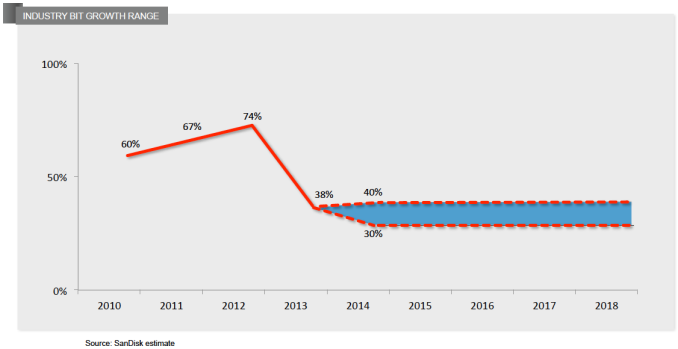
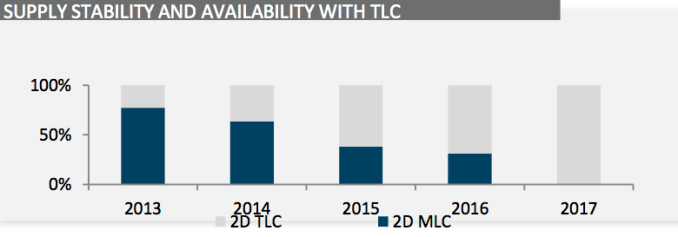
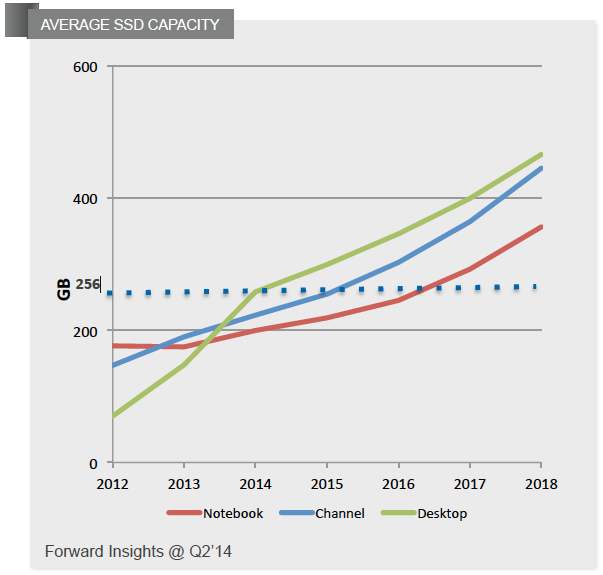
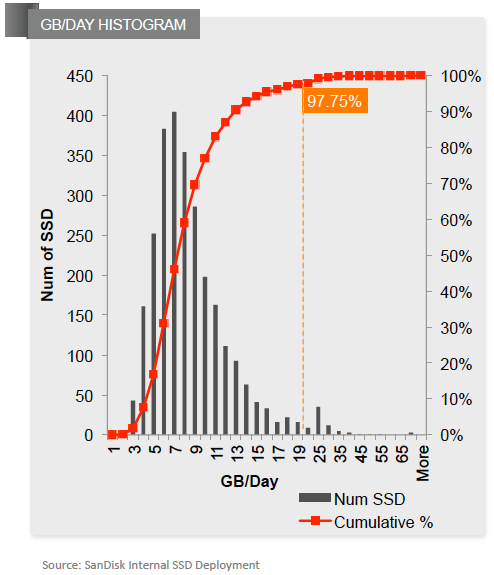









132 Comments
View All Comments
hojnikb - Friday, December 5, 2014 - link
Yeah, mindset in consumers really needs to change. terabytes, gigabytes, cores and gigaherts are just meaningless for avarage user. What it counts is the user experience. And with ssd out of the box, its surely better.PPalmgren - Friday, December 5, 2014 - link
Education of the sales droids is a big factor. Say if Toshiba decided to outfit all their entry level laptops with 256gig SSDs instead of hard drives at cost for the first year of implementation. If they educated the sales reps at best buy/etc., and honestly they'd probably already know, it'd be a gimme. "This gives you better battery life and significantly faster performance, load times of your programs/internet, etc."Either that, or sell all of their retail-style SSDs with FREE disc cloning tech and an adapter. The disc, without cloning tech, is one of the absolutely biggest pain in the ass peices to replace. I'd rather get a new motherboard. Of course, now I have a cloning tool, so its easy as pie. I buy low level laptops for family and swap a SSD in and they get good performance for about $300 less than they'd pay for the premium.
crimsonson - Friday, December 5, 2014 - link
"This is actually the part where we ask for your, our readers, help.....Let us know your ideas in the comment section below and I'll make sure to bring them up with SanDisk and other SSD manufacturers."Why would you ask such question? That is not your job as a tech journalist. Why would you ask your readers to help a manufacturer to market their product?
This article reeks of paid advertisement.
kevith - Friday, December 5, 2014 - link
+1 That was I thought immidiately. If I were to answer that, I would want to be paid. And it doesn´t suit a serious site."How do you think we could shove this SSD down your computer-illeterate grandma´s throat?" Hmmmm...!
madwolfa - Friday, December 5, 2014 - link
You guys are interesting... it's done to help market penetration, which in turn will drive the prices down. Consumers win.crimsonson - Friday, December 5, 2014 - link
that is short sighted.This is Anandtech - supposedly one of the most respected tech sites. Articles like this undermines their main purpose - INDEPENDENT, honest and transparent reporting. Price is only a concern when evaluating a product versus another product. It is not their job to MARKET for a company.
What happens if they give a great review to a mediocre product to help Sandisk? Would you feel the same way then?
'nar - Friday, December 5, 2014 - link
While this article is about Sandisk, the problem is about SSD penetration into the computer market in general. The question what not asking how to sell Sandisk SSD's specifically, but SSD's generally. It just happens to be Sandisk that brought the question to the table.When the supreme court hears a case to rule on a law, somebody needs to actually bring the case before them. Some person or company has the be sued, or charged, or something. I think you are being too judgmental. Just my opinion.
Kristian Vättö - Saturday, December 6, 2014 - link
This is what I replied to another comment, which I hope clarifies the situation."SanDisk sponsored my trip to FMS and in return we agreed to do an article about what SanDisk presented and showcased at the event. AnandTech doesn't cover international flights, so finding a sponsor was the only way I could attend the show. Note that this is the case with every trade show and is thus nothing new or out of the ordinary.
However, SanDisk wasn't involved in the editorial process at all. The only condition they had is that the article needs to be linked to FMS and the meetings/presentations at the show, so I decided to write about TLC NAND and the Fusion-io acquisition as both are big things for SanDisk and the market in general, and one of SanDisk's presentation had interesting data about TLC as shown in the graphs in the article.
We also talked about SSD adoption for a lengthy period of time and I thought it makes sense to reach out to you, our readers, for input. SanDisk did not request or demand this -- it was all my idea. SSD is without a doubt the biggest upgrade that can be made to improve user experience and I'm genuinely interested in what can be done to increase the adoption rate. It's not for the marketing departments, but for all the people that could have better user experience if they knew about SSDs. I also think it's an excellent opportunity for you to be heard and there already great comments, which I'll definitely bring up when I meet with the companies at CES.
I hope this explains the situation. I'd like to emphasize that we are and will continue to be editorially independent and the purpose of sponsorships is to provide you with better content, for which attending trade shows and building relationships is crucial."
Chapbass - Friday, December 5, 2014 - link
A big one for me is just plain old consumer knowledge. I've talked to many non-technical people, you know how many people have heard of a solid state drive? Exactly zero. Hard to get adoption when the general consumer doesn't even know your product exists.MrSpadge - Friday, December 5, 2014 - link
To answer the same question:For somewhat tech-affine people who want to stick to their current OS installation (many people do) we need software to transition smoothly to a SSD. Samsung already ships it by default, but I suspect most people simply don't know about this.
And for less tech-savvy handling different storage locations (OS SSD, other internal drive, external drive, cloud 1, cloud 2 etc.) is cumbersome. Anything that eases this pain could help. I'm thinking about hiding the complexity of the storage system from the user. This could e.g. be automatic caching (with write caching and generous cache sizes - I'm not talking about 8 GB!) or manually or automatically creating relocating specific content to the HDD via hard links. SSD vendors could provide a software to statically assign this to certain folders like for media files, folders marked by the user via the explorer context menu or automatically to old & big files (service pack uninstall etc.).